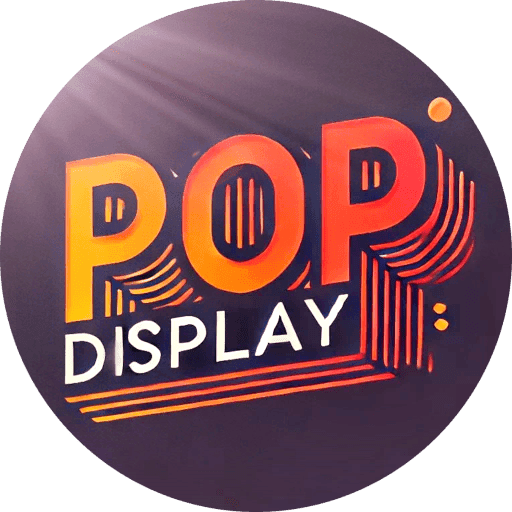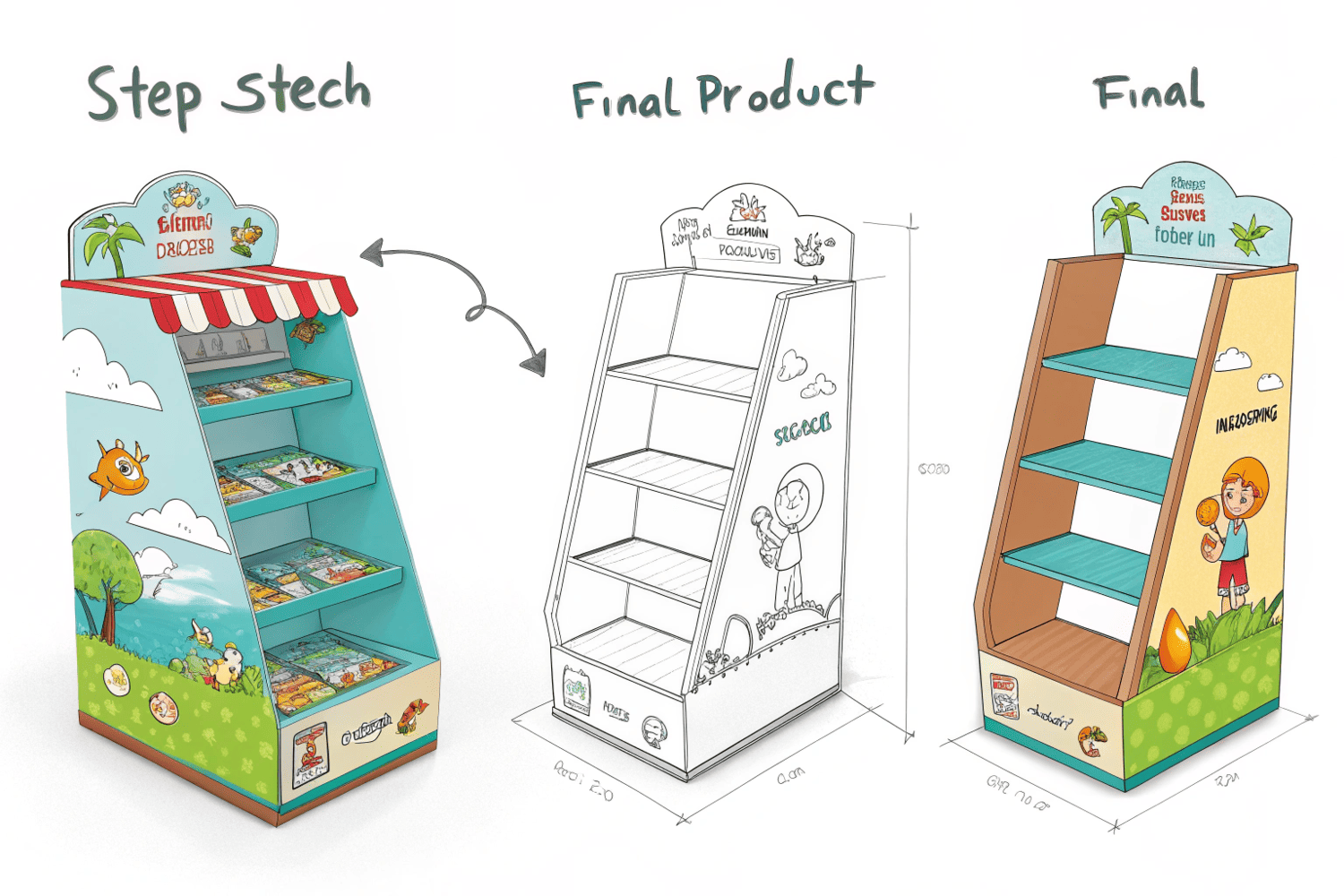在寻找完美的纸板显示屏时,自定义是关键。这不仅是要创建功能性的东西,而且是直接与您的品牌说话并吸引客户的眼睛的东西。
自定义纸板显示器允许企业以引人入胜的方式展示产品。无论是用于零售商店,贸易展览还是促销活动,它们都可以个性化以与您品牌的独特身份相匹配。
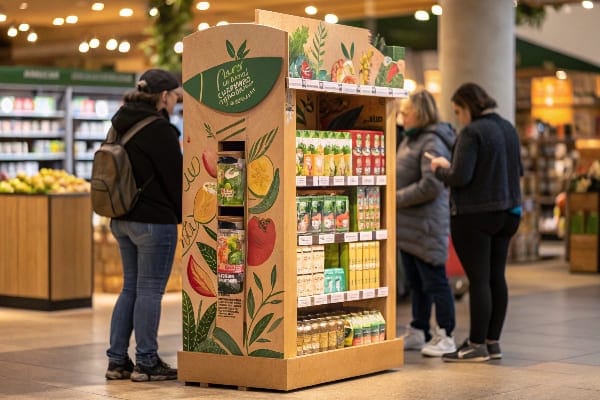
自定义纸板显示是希望在保持实用性同时产生强大视觉影响的企业的绝佳选择。但是,您如何进行这些显示器,以及如何考虑真正有效的自定义显示?
如何制作纸板展示架?
创建纸板显示架是一个简单而又创意的过程,结合了设计,材料选择和精确制作。无论您是想建立一次性事件还是长期显示解决方案,都有一些关键步骤。
要制作纸板显示架,您需要进行周到的设计,坚固的材料和精确的切割。支架不仅应支持该产品,还应增强整体显示体验。

设计纸板显示架1始于了解产品的尺寸,重量和所需的外观。您将需要创建一个不仅可以安全地支持产品的支架,还提供视觉吸引力。这涉及选择正确的纸板类型,通常是瓦楞纸板2以持续使用,并确保显示屏旨在满足重量和负载要求3 。
展台的设计范围从简单的平板解决方案到更复杂的多维显示器。 CAD软件4等数字工具在进入原型阶段之前有助于可视化设计。批准设计后,使用精确的工具(例如Die Cutter 5或Laser Cutter 6)。如有必要,可以将诸如货架或隔室之类的其他功能添加到支架中以提高功能。
自定义选项7包括印刷设计,徽标和品牌元素,直接在纸板上。这增强了视觉吸引力,并增强了您的品牌身份8 。无论是充满活力的图形还是简单的品牌,印刷元素9都将有助于吸引您的产品。
什么是定制展示盒?
自定义显示框是专门设计的,用于以醒目的功能方式展示产品。这些盒子是量身定制的,可满足您产品的独特需求,提供正确的尺寸,结构和视觉吸引力。
自定义显示框专门设计用于在功能,耐用和美学上令人愉悦的同时突出显示您的产品。它们可以帮助您的产品在拥挤的零售空间中脱颖而出。

自定义显示框有各种样式,具体取决于其设计的产品类型。一些常见类型包括台面显示10 ,地板显示11和架子显示器。每种类型的显示框都有不同的目的,但所有类型的目的都共享相同的目标:使产品脱颖而出。
这些盒子由瓦楞纸板制成,既坚固又轻量级12 。该材料确保该产品在运输过程中保持安全,同时易于处理和组装。此外,自定义显示框13可以使用隔间,托盘或其他功能设计,以组织产品并使客户更容易访问。
自定义显示框的最大好处之一是能够用公司的徽标,颜色和其他视觉元素为它们提供烙印。这不仅使盒子更具吸引力,而且还可以增强您的品牌,从而帮助客户轻松识别您的产品。
此外根据订单的所需质量和数量,您可以从各种打印方法中进行选择。打印质量在消费者感知您的产品方面起着至关重要的作用,因此为专业饰面选择可靠的打印方法至关重要。
可以打印到纸板上吗?
是的,您可以直接打印在纸板上,这是自定义显示器的最受欢迎的方法之一。在纸板上打印可以使您可以直接添加图形,徽标和产品信息到表面,从而增强显示屏的整体设计和功能。
在纸板上打印是自定义显示器的好方法。它增加了视觉兴趣,品牌知名度和必需产品信息。
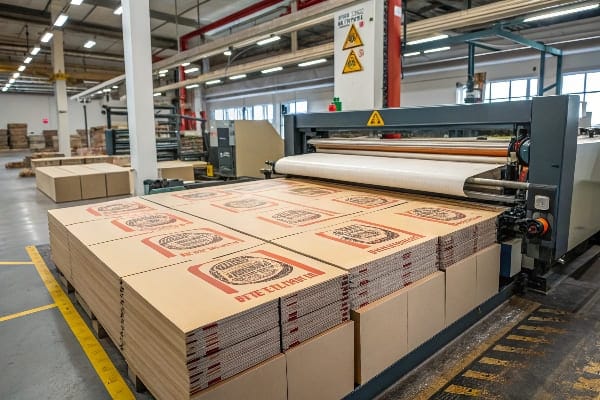
在纸板上打印时,必须选择正确的打印方法。常见方法包括数字打印,偏移打印和弹性印刷。每种方法都有其优势,并根据所需的打印次数和所需的细节级别进行选择。
数字打印通常用于较小的跑步或更复杂的设计,因为它允许更快的生产时间和较低的设置成本。另一方面,偏移打印非常适合大型打印式运行,并提供高质量的结果,尤其是对于更复杂的设计。弹性印刷通常用于包装和较大的订单,提供出色的打印质量,同时具有成本效益。
在打印之前,您还应考虑材料的纹理1和要使用的墨水类型。与其他材料(如纸)相比,硬纸板具有更粗糙的质地,因此打印过程2必须确保颜色弹出而不会损害质量。根据品牌所需的外观,您可以在各种饰面3
展示纸板的 HS 编码是多少?
纸板显示器的HS(协调系统)代码对于国际运输和关税至关重要。它有助于将产品分类为出口和进口期间的关税,税收和其他监管要求。
纸板显示的HS代码通常属于纸张和纸板产品的类别。该代码有助于简化跨边界的导入和导出显示的过程。
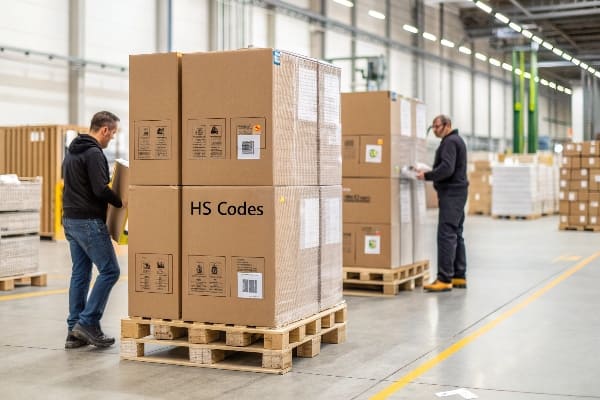
纸板显示的特定HS代码17可能会因产品的确切性质而有所不同。对于常规纸板显示,代码通常属于“其他纸板容器18 ”( HS代码4819 19 )的更广泛类别。该代码包括各种类型的纸板包装,包括瓦楞纸盒和显示器。
如果您要导出纸板显示器,则必须确保使用HS代码20 错误的代码可能会导致延迟,额外费用或海关许可21的。Freight Forwarder 22合作可以帮助您确保使用正确的代码。
根据目的地国家 /地区可能需要其他文件或认证23 例如,某些地区可能需要证明显示屏中使用的材料的证书是可回收24或符合环境标准25 。
结论
自定义纸板显示器是展示产品的绝妙方式,同时推广您的品牌。从设计到打印再到运输,整个过程都是可自定义的,可以创建真正反映业务价值和产品的显示器。
探索此链接,以发现可以增强您的设计过程和可视化功能的顶级CAD软件。 ↩
了解割刀及其在创建显示精确设计中的作用,以确保高质量的结果。 ↩
找出激光切割器如何以精确和效率来改善显示设计过程。 ↩
探索各种自定义选项,以有效地增强您的纸板包装和品牌标识。 ↩
了解包装中的品牌标识可以帮助您与客户建立更牢固的联系。 ↩
了解印刷元素如何显着提高产品的视觉吸引力和销售性。 ↩
了解台面显示及其在零售环境中的有效性,以吸引客户关注。 ↩
在营销策略中发现地板显示的优势,以提高产品可见性。 ↩
发现为什么坚固和轻巧设计的结合对于有效的包装和运输至关重要。 ↩
了解自定义显示框如何通过有效的组织来增强产品演示文稿和客户体验。 ↩
探索此链接以了解偏移打印的好处和过程,这是高质量印刷品的流行选择。 ↩
了解数字印刷的灵活性和效率,使其非常适合短期和快速的周转时间。 ↩
探索弹性印刷的应用和好处,尤其是在包装和标签中,以增强您的印刷知识。 ↩
探索纸板显示的用途可以提供有关有效的营销和产品演示策略的见解。 ↩
了解其他纸板容器可以增强您对包装选项和贸易合规性的了解。 ↩
了解HS代码4819可以帮助您有效地浏览国际运输和海关法规。 ↩
了解HS代码对于平稳的国际贸易至关重要。探索此链接以了解有关其重要性的更多信息。 ↩
关税可能很复杂。此资源将帮助您应对潜在的挑战并避免货物延误。 ↩
货运代理在物流中起着至关重要的作用。发现他们如何简化您的运输过程并确保合规性。 ↩
了解必要的认证可以简化您的运输过程并避免潜在的法律问题。 ↩
了解可回收的材料要求可以帮助确保您的运输实践中的合规性和可持续性。 ↩
探索环境标准可以指导您符合法规并促进业务中的环保实践。 ↩
